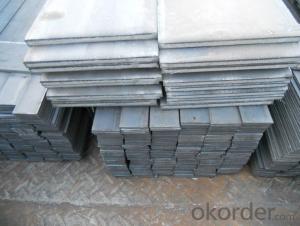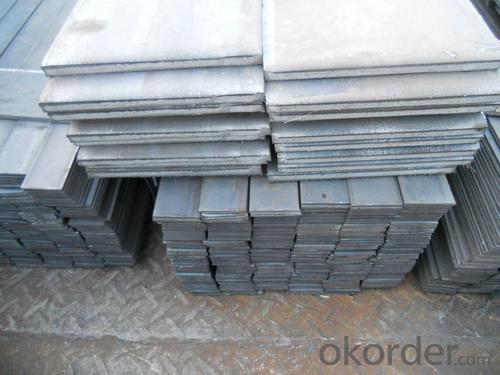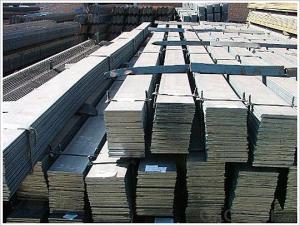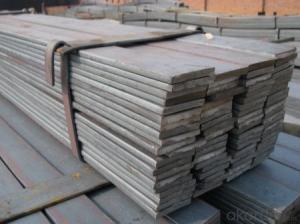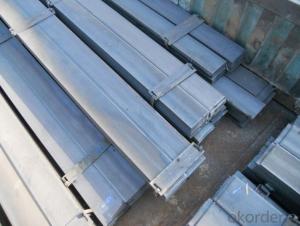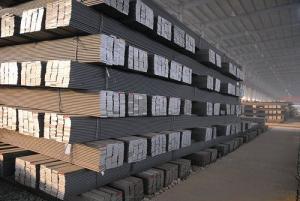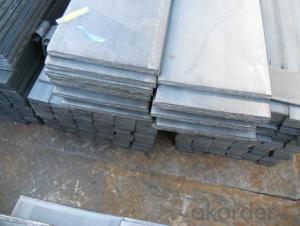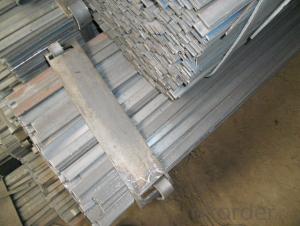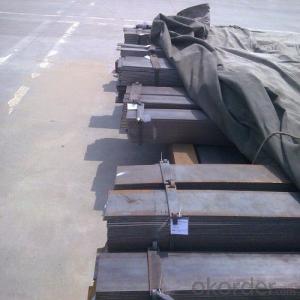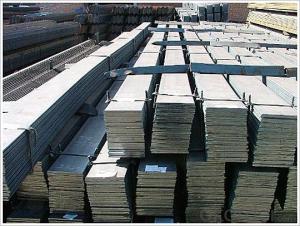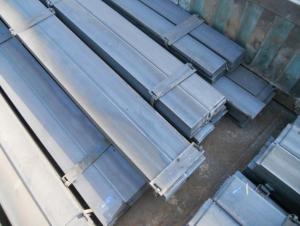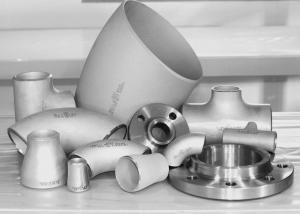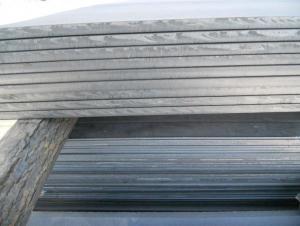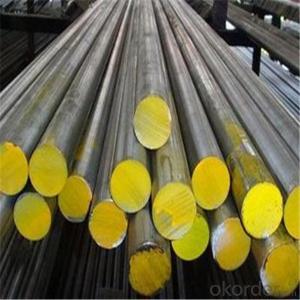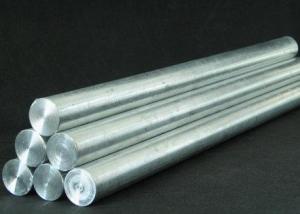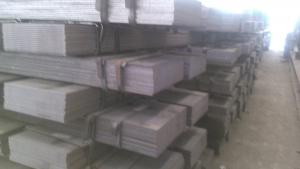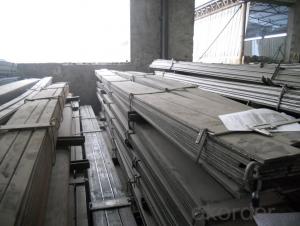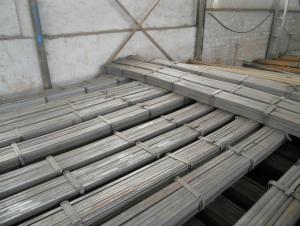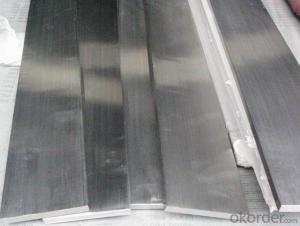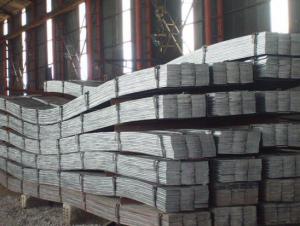Steel flat bars; flat steel high quality
- Loading Port:
- Shanghai
- Payment Terms:
- TT OR LC
- Min Order Qty:
- 25 m.t.
- Supply Capability:
- 10000 m.t./month
OKorder Service Pledge
OKorder Financial Service
You Might Also Like
Production Flow of STEEL FLAT SS400
The steel flat bar is made through three processes:
1.Feeding the material: Feeding the row material (the steel plate) to Slitting Line.
2.Slitting:The steel plate would be slitted into expected width by lengthways cutter.
3. Leveled and cutting: The plat bar would be ground into level by the grinder and then cut into required length
Tangshan flat bar processing plant
Our factory was founded in 2008, has been formed steel processing, trade, distribution, haihe river transportation and information service in the integration of modern company, the headquarters is located in the national steel rich district of tangshan city, hebei province, the first big province, covers an area of 20 mu, is apart from the beijing-shenyang high-speed 0.5 kilometers tangshan north exit, the geographical position is superior, the traffic is convenient.
The company owns the most advanced domestic shear steel equipment, plasma cutting equipment, can according to customer demand for steel plate kaiping, slitting, crosscutting, shear and winding and other personalized processing services, enable customers to save steel cut expenses and losses, greatly reduce the production cost, improve production efficiency. Its main products are steel billet, steel strip, flange plate and web plate, flat steel, open the tablet, etc.
Products applied to the export of flat steel, steel structure, steel plate, cars, ships, cement, steel girder plate socket, machinery manufacturing, bridge template, and other industries. Processing width: 10 mm - 1250 mm, the thickness of 1.5 mm - 16 mm, the length can be due to the needs of customers, annual processing capacity of 100000 tons. Product quality in line with the GB/T 709-2006carbon structure and hot rolled steel plate and strip of low alloy structure" of the relevant requirements.
In the increasingly market competition, the company in good faith integrity, mutual benefit and win-win principle sincerely look forward to cooperating with you!
Product description:
Processing capacity: 100000 tons/year; Slitting precision (width) : 0.5 mm or less
Raw material: Q235B, Q345B, Q235-1 b crosscutting precision (length) : 2 mm or less
Processing: the thickness of 2.0-16 mm; Shear length: 2000 mm above
Wide degree: 15-1250 - mm; Leveling precision: 1-2 MMM squared
- Q: What are the different methods of surface coloring for steel flat bars?
- There are several different methods of surface coloring for steel flat bars, each with its own unique advantages and applications. Some of the most commonly used methods include: 1. Hot-dip galvanizing: This process involves immersing the steel flat bar into a bath of molten zinc, which creates a protective layer on the surface. Galvanizing provides excellent corrosion resistance and is often used in outdoor or high-moisture environments. 2. Powder coating: Powder coating involves applying a dry powder paint to the surface of the steel flat bar, which is then cured using heat. This method offers a wide range of color options, excellent durability, and resistance to chipping, scratching, and fading. 3. Electroplating: Electroplating is a process where a thin layer of metal, such as chrome or nickel, is deposited onto the steel flat bar's surface using an electric current. This method can enhance the appearance of the steel while also providing corrosion resistance. 4. Paint coating: The traditional method of applying paint directly to the surface of the steel flat bar is still widely used. It allows for a wide variety of colors and finishes, but the durability and corrosion resistance may not be as high as other methods. 5. Chemical coloring: This method involves using chemicals to create a controlled oxidation process on the steel flat bar's surface, resulting in various colors and shades. Chemical coloring can provide an attractive appearance while also increasing corrosion resistance. 6. Anodizing: Anodizing is primarily used for aluminum, but it can also be applied to steel flat bars. It involves creating an oxide layer on the surface through an electrochemical process, resulting in enhanced corrosion resistance and the ability to add color through dyes. Each of these methods has its own set of advantages and considerations, such as cost, environmental impact, durability, and aesthetic appeal. The choice of surface coloring method will depend on the specific requirements of the application, including the desired appearance, level of corrosion resistance, and budget constraints.
- Q: What are the properties of steel flat bars?
- Steel flat bars have several properties that make them highly versatile and commonly used in various applications. First, they have excellent strength and durability, making them suitable for structural purposes. They also have good corrosion resistance, especially when compared to other metals. Additionally, steel flat bars are highly machinable, allowing for easy fabrication and customization. They have a smooth surface finish and can be easily welded, making them ideal for construction, manufacturing, and engineering projects.
- Q: Do steel flat bars have a specific tolerance range?
- Yes, steel flat bars do have a specific tolerance range. Tolerance refers to the acceptable deviation from the specified dimensions or properties of a product. In the case of steel flat bars, the tolerance range typically includes variations in thickness, width, and length. The specific tolerance range may vary depending on the manufacturing standards, grade of steel, and intended application of the flat bars. These tolerances are important to ensure the flat bars meet the required specifications and can be effectively used in various construction and industrial applications.
- Q: Can steel flat bars be used as support beams?
- Yes, steel flat bars can be used as support beams as they have high strength and load-bearing capacity. However, it is important to consider the specific requirements and structural calculations to ensure they are suitable for the intended purpose and meet the necessary safety standards.
- Q: Are steel flat bars suitable for making HVAC components?
- Yes, steel flat bars are suitable for making HVAC components. Steel is a durable and strong material that can withstand the stresses and demands of HVAC systems. Flat bars provide stability and structural support, making them a suitable choice for various HVAC components such as brackets, supports, frames, and ductwork.
- Q: Can steel flat bars be used in automotive applications?
- Yes, steel flat bars can be used in automotive applications. They are commonly used in various parts of automobiles such as brackets, frames, supports, and reinforcements due to their strength, durability, and ability to withstand high loads and impact.
- Q: The difference between galvanized flat steel 40*4 and galvanized flat steel 80*8 is the difference on the material list!
- Here, your galvanized flat steel refers to the basic matrix is carbon content less than 0.18% carbon steel (Q235), after galvanizing (general hot plating), play the role of surface oxidation resistance, corrosion resistance. Generally used in the power sector, what you mention is the difference in size.
- Q: What is the maximum width of a steel flat bar?
- The specific manufacturing process and desired application can cause variations in the maximum width of a steel flat bar. Typically, steel flat bars are available in widths ranging from 1/8 inch to 12 inches, although certain specialty manufacturers might offer wider alternatives. To ascertain the precise maximum width for a particular type of steel flat bar, it is essential to consult with a steel supplier or manufacturer.
- Q: What is the maximum load that steel flat bars can support?
- The maximum load that steel flat bars can support depends on various factors such as the dimensions of the bar, the type and grade of steel used, and the method of support. Therefore, it is difficult to provide a specific answer without more details.
- Q: Can steel flat bars be used in the manufacturing of material handling systems?
- Certainly, the utilization of steel flat bars is applicable in the production of material handling systems. These bars, known for their versatility and durability, are highly suitable for a wide range of applications within the manufacturing industry. They serve as excellent building materials for constructing frames, supports, and components in material handling systems like conveyor belts, storage racks, and pallet handling equipment. By providing robustness and stability, steel flat bars guarantee the secure and efficient transportation of materials within a facility. Moreover, their flat structure facilitates effortless attachment of supplementary components, such as rollers or brackets, thus amplifying their efficacy in material handling systems.
Send your message to us
Steel flat bars; flat steel high quality
- Loading Port:
- Shanghai
- Payment Terms:
- TT OR LC
- Min Order Qty:
- 25 m.t.
- Supply Capability:
- 10000 m.t./month
OKorder Service Pledge
OKorder Financial Service
Similar products
Hot products
Hot Searches
Related keywords
